INTRODUCTION
1643 Florentine Map showing Montemigiano in the upper left and Fratta in the upper right (now Umbertide)
Borgo di Montemigiano is located in Central Italy in a region rich with history. Just over the Tuscan border to the West is Lake Trasimeno, the location of the Battle of Lake Trasimene, the Roman Defeat by Hannibal in 217 bce. Nearby town names still recall the grisly battle where over 15,000 Romans were killed in an afternoon - "Ossia" means "bones" and "Sanguanito" translates to "bloody".
The Borgo di Montemigiano dates to the early 12th Century and old maps refer to Montemigiano as M. Migiana, Montemixiano or Monte Mezzano. The medieval town is located on a hillside above the Niccone River valley, one of the Tiber River tributaries, in the northeastern part of the province of Umbria.
For many years, we’ve wondered about the function of the random shelves around Montemigiano - postulating perhaps they were for feeding birds, cooling pies, or growing herbs. Turns out, they were probably used for something else entirely!
Centuries before the rise of the Roman Republic, a different culture dominated the Italian Peninsula: The Etruscans, a sophisticated civilization whose heartland was in and around modern-day Tuscany, and who have posed an enduring puzzle.
Saint Sebastian is a popular male saint, especially today among athletes. In historical times he was regarded as a saint with a special ability to intercede to protect from plague, and devotion to him increased greatly when plague was active.
Almost every plant at Montemigiano has been purposefully cultivated for hundreds of years. According to Angelo, the Italian patriarch of the town, the pool terrace was once a magnificent vegetable garden, and lavender and rosemary bushes still form aromatic hedges. An abundance of trees provide precious shade, producing cherries, pomegranates, figs, chestnuts, and olives. This seasonal cornucopia has sustained generations of families, and when the rains are favorable, it is as beautiful as it is bountiful.
How, you ask, does one acquire a former crypt converted into a bathroom? In the 1980s, the Italian government sold old abandoned houses and castles in the Umbrian countryside to foreign investors for pennies, and my dad and some friends bought a medieval castle called Borgo di Montemigiano. After several years of painstaking renovations, it was converted into seven different houses.

Oil on Canvas by Megan Zacher, 2021









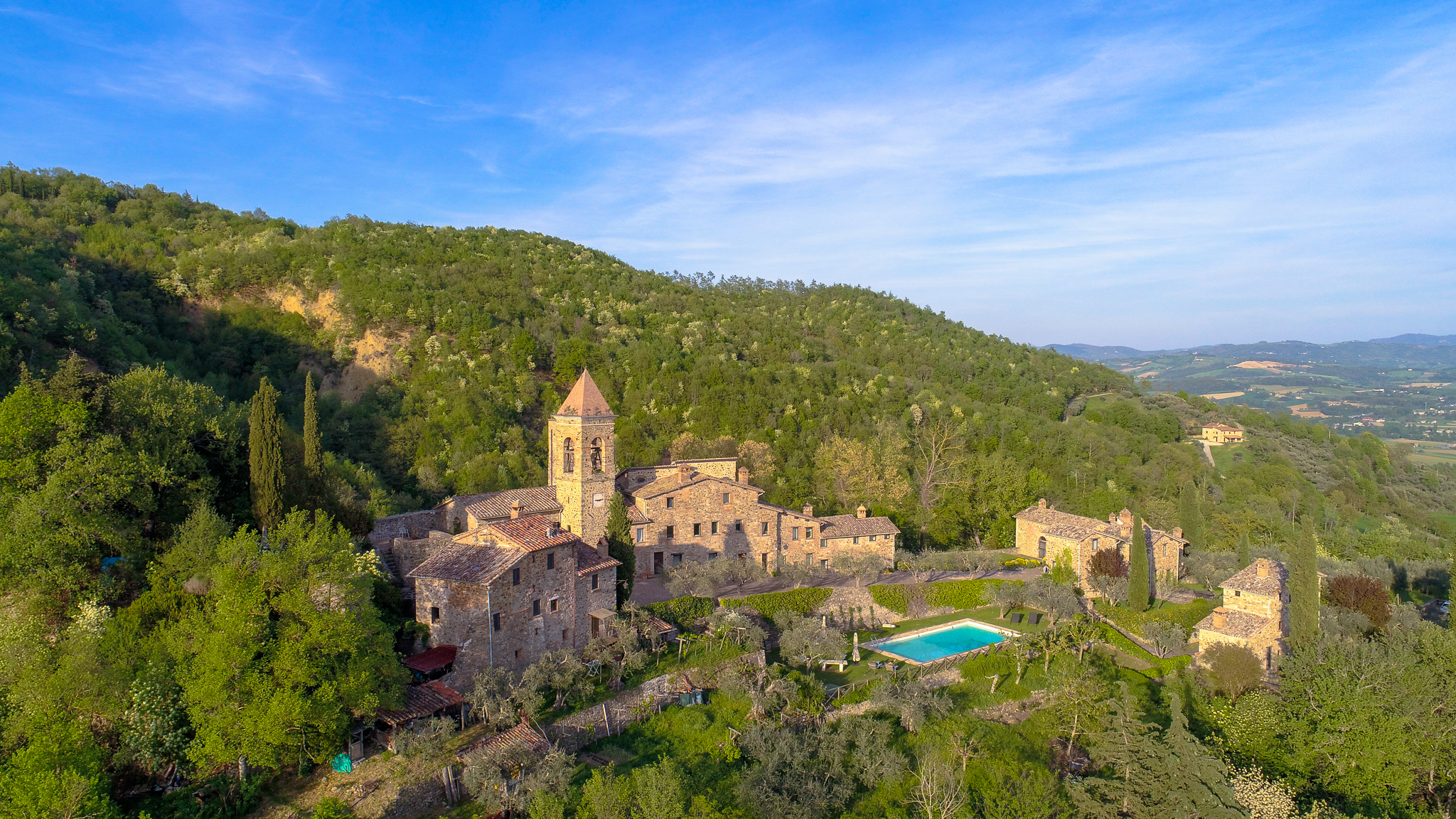

Photo Gallery
BORGO BLOG
Day Trip Recommendations
We found San Giovanni Hot Springs when we visited in July 2013 and it was an awesome discovery. The Borgo pool was closed during our visit so we adventured to anywhere on the map we could find "Terme" or thermal springs, and one day we discovered this local treasure.
The hot springs are on a limestone quarry and the water is saturated with lime and doesn't smell too much like sulfur. In the cooler pools the lime collects at the bottom and is squishy on your feet - people rub this on their skin for its healing properties. There are water falls that are awesome to sit under (feels like a massage).
Our "terme" adventures brought us to these gorgeous, historic baths on the Farma river south of Sienna. Admission is free and parking is along the road. Watch your stuff since there are lots of local "pirates" and the smell is pungent, but otherwise it is a wonderful day-trip!
Petriolo has been famous since the times of the Etruscans and Romans for its natural hot sulfur springs with healing properties. In 1266 the Signoria of Siena built baths here, and the oldest spa building from the Middle Ages is still visible on one side of the bridge that crosses the river Farma. The remains of the ancient baths, consisting originally of a porch with vaulted ceilings and three square swimming pools square that once received the 'thermal water, are still visible.
Excerpt from "The Dog Who Ate the Truffle" (page 235)
"This charming, well-preserved medieval hill town is a few miles north of Umbertide. A stone wall encloses several hundred ancient houses, a few shops and restaurants, three churches, a post office, a museum, a park, a piazza, a bar, and a gelateria that make up the quaint village. The panoramic views looking down into the valley are stupendous. Montone can be seen in less than half an hour, but staying for dinner or attending one if its festivals makes it well worth the trip."
The Abbey of San Salvatore di Monte Acuto, or Badia di Monte Corona, was an important Benedictine monastery of the 11th century. Founded around 1008 by St. Romualdo, the founder of the Order of Monks Camaldolesi, established several hermitages and monasteries, leaving significant traces of its passage across the Apennines between Umbria and Marche and Tuscany.
UPPER CHURCH
The upper church was built in two stages: first, the part above the crypt, consecrated by St. John of Lodi, bishop of Gubbio, and dedicated to St. Sofia later in the sixteenth century, once built the Hermitage Montecorona, it was necessary to enlarge the church and the extension that was built, dedicated to St. Agnes, was assigned to the faithful, while the oldest was reserved for monks. The church was renovated and transformed in the eighteenth century, and then returned to its original state in the 1960s.
In the tradition of the best Italian churches, the Badia features the remains of a (very short) saint encased in glass.
CRYPT
The most remarkable feature of this church is in the basement - an ancient Roman temple has been converted to a small chapel, dedicated to Our Lady of Grace.
Norcia was founded by the Sabines as early as 1300 BC, but later came under the control of Rome. The city’s greatest claim to fame however, is having been the birthplace of St. Benedict, the founding father of the Benedictine order of monks whose long history spans centuries of European history. In fact, today St. Benedict is the patron saint of Europe.
The drive to Norcia, which is situated in southeastern Umbria is very scenic as it is located in a plain surrounded by Monti Sibillini whose snow capped peaks loom over the town. Nero Norcia, also known as Mostra Mercato del Tartufo Nero Pregiato di Norcia e dei Prodotti Tipici is one of Italy’s most important black truffle markets.
A short drive up the Niccone river valley leads to a curvy pass with a view of Lake Trasimeno below. This is an area rich in history. The location of the Battle of Lake Trasimene, the Roman Defeat by Hannibal in 217 bc, nearby town names still recall the grisly battle where over 15,000 Romans were killed in an afternoon ("Ossia" means "bones" and "Sanguanito" translates to "bloody").
From Passignano its fun to take the boat ferry to Isla Maggiore (or "Fennel Island" as we affectionatly call it). During the high season, the boat leaves every half hour. Take a short hike around Fennel Island and you'll see why its earned its nickname.
Orvieto is a city and comune in Province of Terni, southwestern Umbria, Italy situated on the flat summit of a large butte of volcanic tuff. The site of the city is among the most dramatic in Europe, rising above the almost-vertical faces of tuff cliffs that are completed by defensive walls built of the same stone.
The ancient city (urbs vetus in Latin, whence "Orvieto"), populated since Etruscan times, has usually been associated with Etruscan Velzna, but some modern scholars differ. Orvieto was certainly a major centre of Etruscan civilization; the Archaeological Museum (Museo Claudio Faina e Museo Civico) houses some of the Etruscan artifacts that have been recovered in the immediate neighborhood. An interesting survival that might show the complexity of ethnic relations in ancient Italy and how such relations could be peaceful, is the inscription on a tomb in the Orvieto Cannicella necropolis: mi aviles katacinas, "I am of Avile Katacina", with an Etruscan-Latin first name (Aulus) and a family name that is believed to be of Celtic ("Catacos") origin.
Orvieto was annexed by Rome in the third century BC. After the collapse of the Roman Empire its defensible site gained new importance: the episcopal seat was transferred from Bolsena, and the city was held by Goths and by Lombards before its self-governing commune was established in the 10th century, in which consuls governed under a feudal oath of fealty to the bishop. Orvieto's relationship to the papacy has been a close one; in the tenth century Pope Benedict VII visited the city of Orvieto with his nephew, Filippo Alberici, who later settled there and became Consul of the city-state in 1016.
In the central heart of Umbria, approximately half-way between Rome and Florence, lies Deruta. At first glance from the approach, it appears like any other of the multitude of medieval towns dotting the countryside. Enter the gates, however, and you will quickly see that this hamlet is singular: its sole industry is ceramics. The nearly two hundred workshops and stores, along with a school for Ceramic Arts and a Ceramics Museum, all confirm Deruta’s thriving artistic tradition.
The first reliable documentation to bear witness to ceramic production in Deruta dates back to the Middle Ages. A document of 1290, one of the oldest to came to light, informs us that the church of San Nicolo in Deruta, subordinate to the chapter of the cathedral in Perugia and therefore obliged to pay an annual tribute, paid it with a load or vases. It is not possible to establish for how long this practice had existed, but it does suggest that ceramic activity in the Deruta area was widespread, established and well-known.
Originally an Umbrian city, Cortona was conquered and enlarged by the Etruscans, who called it Curtun. Cortona eventually became a Roman colony under the name Corito. During the barbarian invasions of the 553, Cortona was sacked and destroyed by the Goths. Cortona became a Ghibellinian city state in the 13th century, with its own currency. From 1325 to 1409 the Ranieri-Casali family successfully ruled the town. After being conquered by Ladislaus of Naples in 1409, Cortona was sold to the Medici in 1411. In 1737, the senior branch of the Medici line went extinct and Cortona came under the authority of the House of Lorraine. Following the Italian Wars of Independence, Tuscany - Cortona included - became part of the Kingdom of Italy.
Cortona Legend:
The foundation of Cortona remains mixed in legends dating to classical times. These were later reworked especially in the late Renaissance period under Cosimo I de' Medici. The 17th-century Guide of Giacomo Lauro, reworked from writings of Annio da Viterbo, states that 108 years after the Great Flood, Noah entered the Valdichiana via the Tiber and Paglia rivers. He preferred this place better than anywhere else in Italy, because it was so fertile, and dwelt there for thirty years. One of Noah's descendants was Crano his son who came to the hilltop and, liking the high position, the fine countryside and the calm air, built the city of Cortona on it in 273 years after the Great Flood.
Most recently famous for the Amanda Knox trial, Perugia was an Umbrian settlement but first appears in written history as Perusia, one of the twelve confederate cities of Etruria; it was first mentioned in Q. Fabius Pictor's account, utilized by Livy, of the expedition carried out against the Etruscan league by Fabius Maximus Rullianus in 310 or 309 BC. In 216 and 205 BC it assisted Rome in the Second Punic War but afterwards it is not mentioned until 41-40 BC, when Lucius Antonius took refuge there, and was reduced by Octavian after a long siege, and its senators sent to their death. A number of lead bullets used by slingers have been found in and around the city. The city was burnt, we are told, with the exception of the temples of Vulcan and Juno— the massive Etruscan terrace-walls, naturally, can hardly have suffered at all— and the town, with the territory for a mile round, was allowed to be occupied by whoever chose. It must have been rebuilt almost at once, for several bases for statues exist, inscribed Augusto sacr(um) Perusia restituta; but it did not become a colonia, until 251-253 AD, when it was resettled as Colonia Vibia Augusta Perusia, under the emperor C. Vibius Trebonianus Gallus.
The city's origins are very ancient. The hills above the town were already occupied in the Bronze Age. As Ikuvium, it was an important town of the ancient Umbrian people in pre-Roman times, made famous for the discovery there of the Eugubine (or Iguvine) Tables, a set of bronze tablets that together constitute the largest surviving text in ancient Umbria. After the Roman conquest in the 2nd century BC — it kept its name as Iguvium — the city remained important, as attested by its Roman theater, the second-largest surviving in the world.








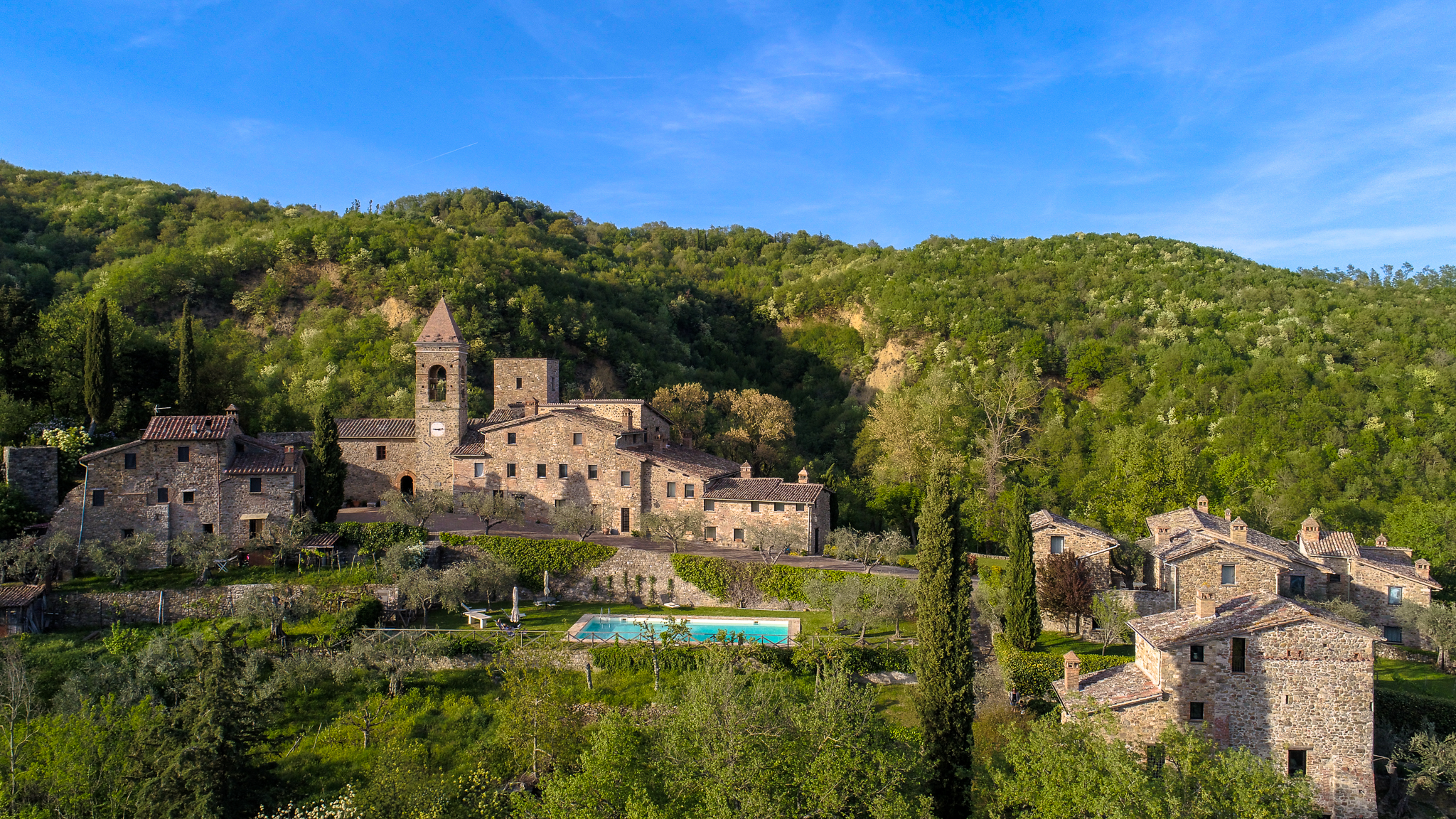



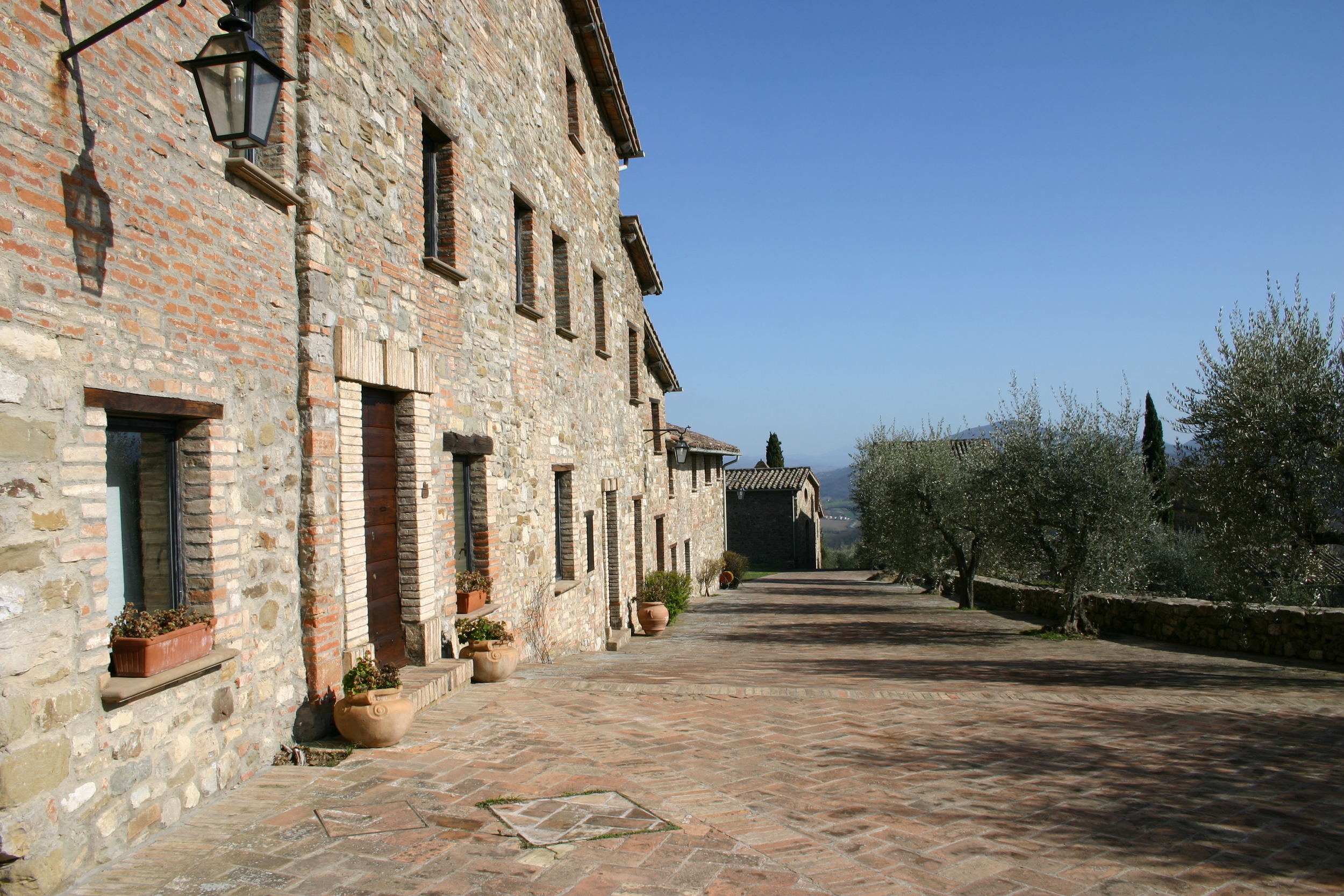































































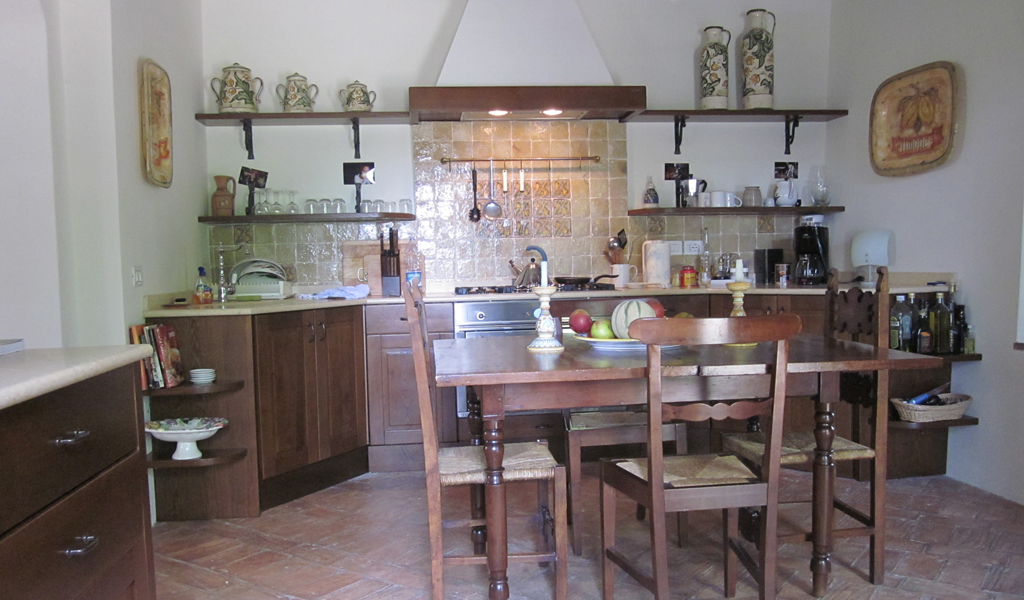




















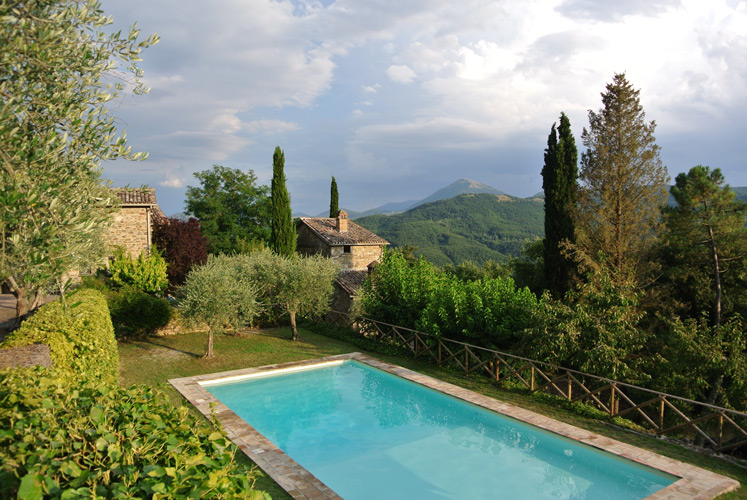

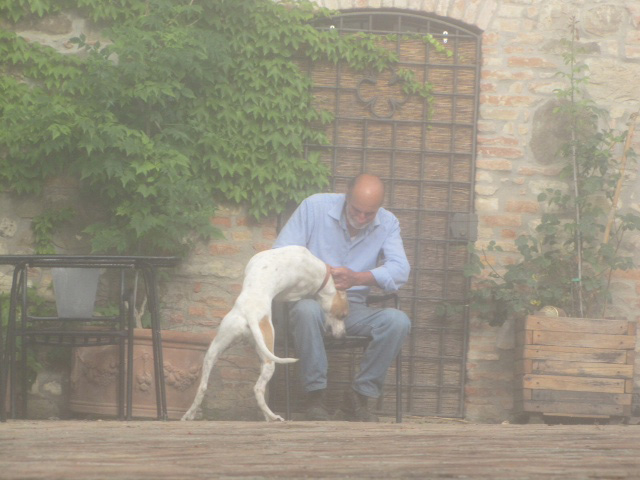

















In the wild Umbrian countryside, the stunning thousand-year-old Castello di Reschio has been transformed into a 36 rooms hotel, perfectly integrated in the rural surroundings and exuding with history. Explore the estate and discover how the owners have taken an organic approach to the design, championing local craftsmanship and creating thoughtful, whimsical spaces.